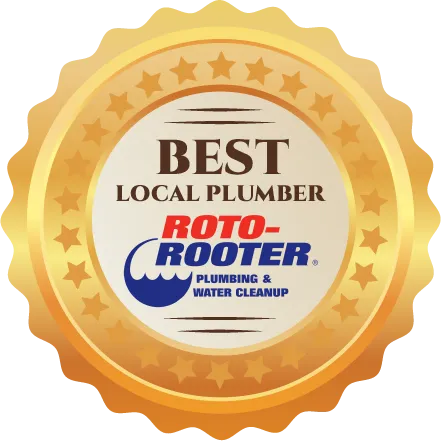Seasonal Drain Care Checklist for St. George Residents
As a resident of St. George, you’re likely familiar with the unique challenges posed by the area’s hard water and the occasional bouts of heavy rain that can stress your home’s plumbing system. Implementing a seasonal drain care checklist is essential in this environment to prevent expensive plumbing issues. The high mineral content in the water can lead to calcium build-up in pipes, while sudden rainstorms can cause flooding or exacerbate existing drainage problems. Regularly inspecting drains for blockages, especially those caused by mineral deposits, and monitoring tree roots that might intrude into sewer lines are crucial steps. These simple yet effective practices can help you avoid potential plumbing headaches in the future. Are you sure you’re addressing all these local challenges? There’s always more to consider to keep your home’s plumbing in top shape.
Inspect Your Drains for Blockages
Checking your drains for blockages is essential to ensure they function properly throughout the year. In coastal regions, such as those prone to heavy rainfall, drains can become clogged with sand and silt.
Start by examining your kitchen and bathroom sinks. Notice if water drains slowly, which can indicate clogs. In areas with hard water, mineral deposits can also contribute to slow drainage. Use a flashlight to inspect the drain openings for visible debris. You can utilize a plunger or a plumber’s snake to dislodge minor blockages.
In colder climates, regularly pour boiling water down the drains to help clear out any buildup that could freeze and cause problems. Pay attention to your shower and bathtub drains as well. Hair and soap scum are common culprits here, especially in regions with high humidity that encourage mold growth. Invest in a drain screen to prevent these from becoming an issue.
Additionally, in urban areas with older plumbing systems, listen for gurgling sounds in your drains, which can signal a problem due to aging infrastructure. Taking these steps helps maintain a healthy drainage system tailored to your local conditions.
Clear Out Debris From Gutter Systems
In areas like the Pacific Northwest, where rain is frequent and heavy, maintaining a clean gutter system is particularly crucial for preventing water damage to your home.
The region’s abundant trees can lead to a quick buildup of leaves, twigs, and other debris, blocking the flow of water and causing overflow issues.
To keep your gutters clear, grab a sturdy ladder and use gloves to remove any buildup. It’s best to tackle this task a few times a year, especially after heavy storms or during the fall when leaves are abundant.
Once debris is cleared, consider using a hose to flush out any remaining dirt. This guarantees your gutters are functioning properly and directs water away from your home’s foundation.
Regular maintenance helps prevent costly repairs and keeps your home safe from water-related issues.
Don’t wait until it’s too late; keep your gutters clean.
Test Water Pressure Regularly
After ensuring your gutters are in excellent condition, it’s crucial to address another vital aspect of home maintenance: regularly testing your water pressure.
In areas with older infrastructure, such as historic neighborhoods or regions with hard water, high water pressure can exacerbate existing weaknesses in the plumbing system, leading to expensive repairs. Conversely, low water pressure might signal leaks or blockages, which can be common in areas experiencing frequent ground shifts or seismic activity.
To test your water pressure, purchase a water pressure gauge from a local hardware store. Attach it to an outdoor faucet, turn the water on, and read the gauge. Ideally, your water pressure should be between 40 and 60 psi.
If you notice anything outside this range, consider adjusting your pressure regulator or consulting a professional. Regular checks ensure your plumbing system remains efficient, preventing unexpected issues and maintaining your home’s overall health.
Check for Slow Draining Sinks and Tubs
In regions with hard water, such as many parts of the Midwest, slow-draining sinks and tubs can be more common due to mineral buildup in the pipes.
You may notice water pooling longer than usual, which can indicate a clog or buildup. To tackle this, start by checking for visible debris like hair or soap scum around the drain.
Utilize a plunger or a drain snake to remove any blockages. If those tools don’t help, try pouring a mixture of baking soda and vinegar down the drain. This natural remedy can break down minor clogs and freshen up your pipes.
Regular checks are essential to prevent more serious issues. If problems persist, it might be time to call a professional plumber familiar with the area’s plumbing challenges to inspect your system.
Maintain Outdoor Drains for Seasonal Changes
While you’ve tackled indoor drains, don’t overlook the importance of maintaining outdoor drains as the seasons change, especially in regions with distinct seasonal weather patterns.
In areas with heavy autumn leaf fall, such as the northeastern United States, outdoor drains can easily become clogged with leaves, dirt, and debris. Regularly clear away any buildup to prevent blockages.
In places like the Pacific Northwest, where heavy rain is common, inspect your outdoor drains for any cracks or damage that could worsen over time. Seal any visible cracks or gaps with waterproof sealant to avert leaks during those rainy spells.
If you live in colder climates, such as the Midwest, keep an eye on the drains’ grates and covers, making sure they’re secure and not obstructed.
In winter months, confirm your drains are adequately insulated to prevent freezing. If melting snow flows into unprotected drains, it can refreeze and cause damage.
Flush Drains With Hot Water and Vinegar
To keep your drains running smoothly, especially in areas with hard water like the Southwestern United States, flush them with a mixture of hot water and vinegar.
Start by boiling a pot of water. Carefully pour it down the drain to dissolve minor clogs and clear debris caused by mineral deposits common in this region. Follow up with one cup of vinegar. The vinegar’s acidity helps break down buildup, particularly soap scum and grease, that can accumulate over time.
Let the vinegar sit for about five minutes, allowing it to work its magic. Then, flush the drain with another pot of boiling water to ensure everything washes away. This simple routine helps prevent clogs and keeps your pipes fresh.
In areas where dust storms contribute to increased debris, repeating this process once a month is especially beneficial. Regular maintenance like this prevents bigger issues and keeps your home running smoothly.
Examine Pipes for Leaks or Cracks
Regularly examining your pipes for leaks or cracks is essential to maintaining a healthy plumbing system, especially in regions with extreme temperature fluctuations.
In areas with cold winters, such as the Northern United States or Canada, pipes are more susceptible to freezing and bursting. Take a few minutes to inspect the visible pipes in your home, paying special attention to those in unheated spaces like basements or garages.
Look for any signs of moisture, corrosion, or rust. Pay close attention to joints and connections, as these areas are more prone to developing issues. If you notice any damp spots, discoloration, or unexpected mold growth, you might’ve a leak that needs addressing.
In coastal areas, high humidity can accelerate pipe corrosion, so it’s crucial to inspect your pipes more frequently.
For hard-to-reach pipes, listen for dripping sounds, especially in quiet moments. Check under sinks, around appliances, and in basements or crawl spaces.
Even small leaks can escalate into significant problems if left unchecked. By staying vigilant, you can catch minor issues before they turn into costly repairs, ensuring your plumbing system remains efficient and reliable.
Insulate Outdoor Pipes for Winter
As winter approaches, it’s crucial to insulate outdoor pipes to prevent freezing and potential bursts, especially in areas known for harsh winters like the Midwest or Northeast.
Begin by identifying exposed pipes in your yard, particularly those running along exterior walls or underground. Use foam pipe insulation, which is affordable and easy to install, to wrap these pipes. Ensure the insulation fits snugly without gaps.
In regions prone to extreme cold, such as the Great Plains, consider using heat tape for extra protection before adding insulation.
Secure the material with electrical tape, ensuring it stays in place during harsh weather.
Don’t overlook garden hoses and spigots—detach hoses and cover spigots with insulated covers. This simple precaution is especially important in areas with unpredictable winter conditions, like the Pacific Northwest, where temperatures can fluctuate rapidly.
Clean Garbage Disposal Thoroughly
A clean garbage disposal is essential for a fresh and functional kitchen, especially in areas with high humidity where odors can intensify.
Start by turning off the disposal and disconnecting its power source. Use a flashlight to inspect the disposal for any visible debris, as small food particles can easily get stuck in the blades. Remove any trapped items with tongs or pliers—never use your hands.
Next, pour half a cup of baking soda followed by one cup of vinegar down the disposal. Let the mixture fizz for a few minutes to break down grime, a crucial step in regions with hard water that can lead to mineral buildup. Rinse with hot water to flush loosened debris.
To tackle odors, grind lemon or orange peels with ice cubes. The ice sharpens blades, while citrus freshens the unit.
Regular cleaning is especially important in coastal areas where food waste can decompose faster, keeping your disposal running smoothly and preventing unpleasant smells from lingering in your kitchen.
Schedule Professional Drain Cleaning
Professional expertise is key to maintaining a healthy drain system. In regions like St. George, where the prevalence of hard water can exacerbate drain issues, having a professional regularly inspect and clean your drains is especially important.
Even if you don’t notice minor clogs or buildup, a professional can identify these issues before they escalate into major problems. Scheduling regular drain cleanings ensures your pipes remain free-flowing and significantly reduces the risk of costly repairs. Experts utilize advanced tools and techniques that are beyond the scope of DIY methods.
In St. George, the combination of hard water and the local climate can lead to unique plumbing challenges. Don’t wait for signs of trouble like slow drainage or strange odors to take action.
Monitor Tree Roots Near Plumbing Lines
While maintaining your drains with regular professional cleanings is essential, it’s equally important to keep an eye on nature’s impact, particularly tree roots near plumbing lines.
In regions with lush vegetation and mature trees, such as the Pacific Northwest, tree roots are especially prone to infiltrating plumbing systems. These roots naturally seek moisture and can infiltrate your pipes through small cracks or joints. This can lead to blockages, leaks, or even burst pipes, causing costly repairs.
To prevent this, regularly inspect the trees on your property, especially those close to underground plumbing.
In areas with dense tree cover, like the suburbs of Seattle or Portland, look for signs like slow drains or gurgling noises, which may indicate root intrusion. If you suspect an issue, contact a professional to assess and address it before it escalates.
You can also consider installing root barriers or choosing tree species known for their non-invasive root systems, such as certain varieties of maple or dogwood, to reduce future risks.
Prepare Drains for Heavy Rainfall
As the seasons change in the Pacific Northwest, it’s crucial to ensure your drains are ready to handle the heavy rainfall that often accompanies this region.
Start by inspecting and cleaning your gutters and downspouts, as the abundant evergreen trees can lead to an accumulation of pine needles and debris. Clear away these blockages to prevent water from overflowing and damaging your home.
In this area, it’s particularly important to make sure water flows freely away from your foundation to avoid flooding issues common in the low-lying areas. Check the grading around your home, confirming it slopes away from the structure, especially since the clay-heavy soil here can exacerbate drainage problems.
Inspect outdoor drains and clear any obstructions, as heavy rain can quickly overwhelm systems that aren’t properly maintained.
Inside, consider using drain covers to catch debris before it enters your pipes, particularly if your plumbing is older and more susceptible to clogs. Pour a mixture of baking soda and vinegar down your drains monthly to keep them clear, as this eco-friendly solution is effective against the mineral deposits common in the local water supply.
Regular maintenance helps prevent costly repairs and guarantees your drainage system performs well under the heavy rainfall typical of this region.
Conclusion
By following this seasonal drain care checklist, residents can keep their plumbing in top shape throughout the year, especially in the unique climate of St. George. Regular inspection for blockages is crucial due to the area’s occasional heavy rainfall, which can lead to debris accumulation in gutters. Consistently testing water pressure is essential, as the fluctuating temperatures can impact plumbing systems. Don’t overlook checking for slow drains, maintaining outdoor drains, and cleaning your garbage disposal, particularly during the hot, dry months when residue can harden quickly. Scheduling professional drain cleaning and monitoring tree roots is vital in St. George, where the desert environment can cause roots to seek out water sources aggressively. Stay proactive, and your plumbing will remain in excellent condition, even in the challenging conditions of St. George!
Tags





